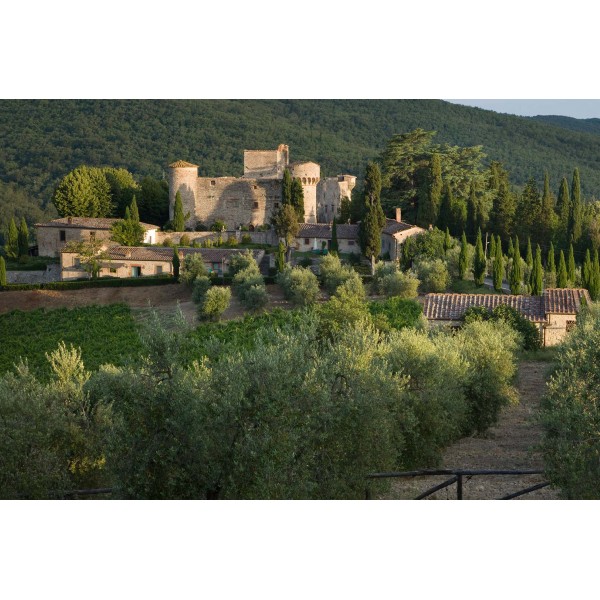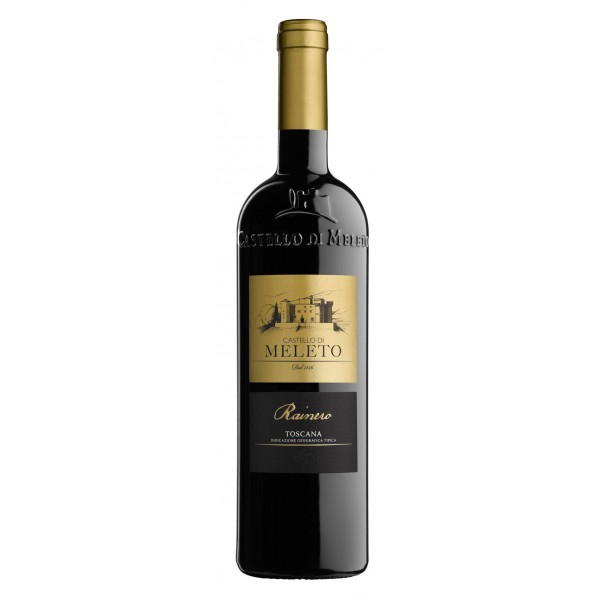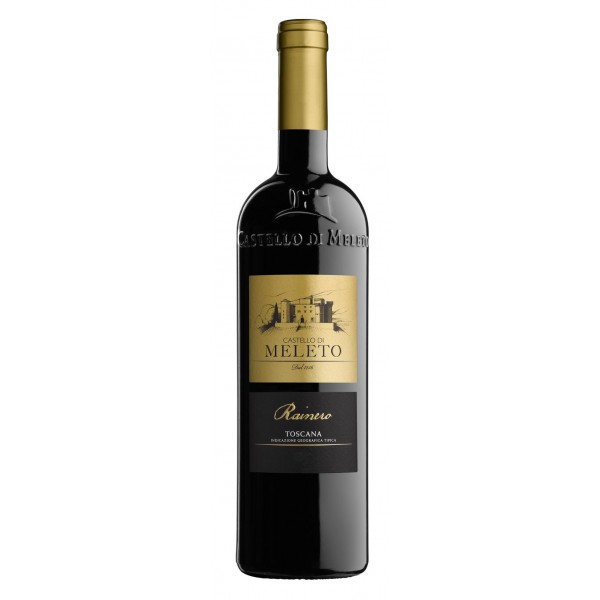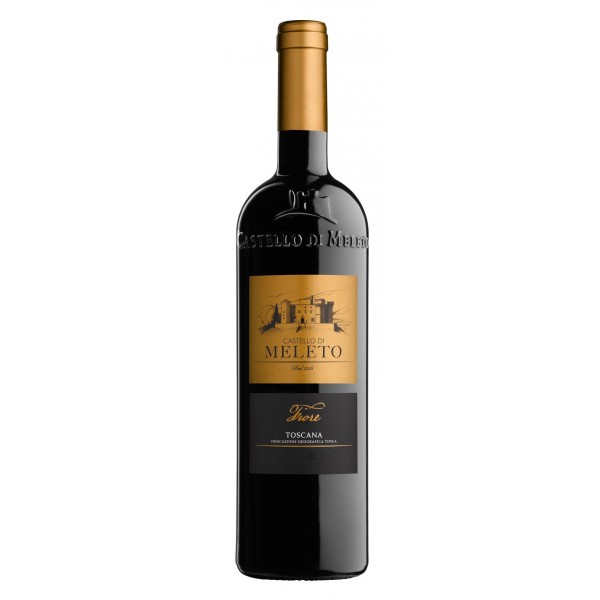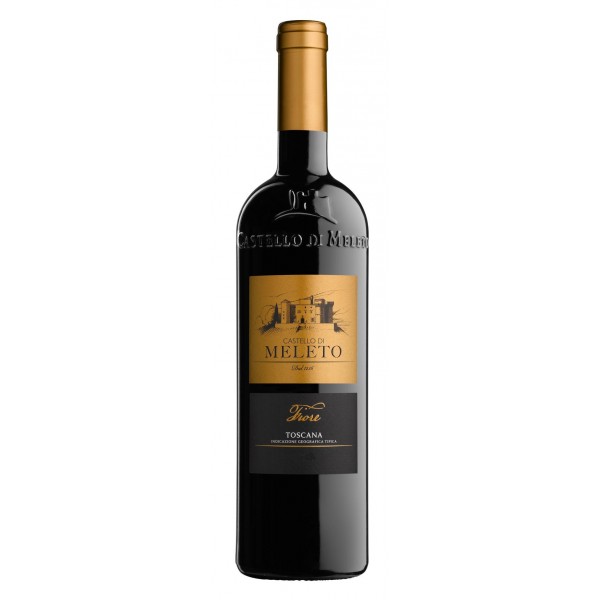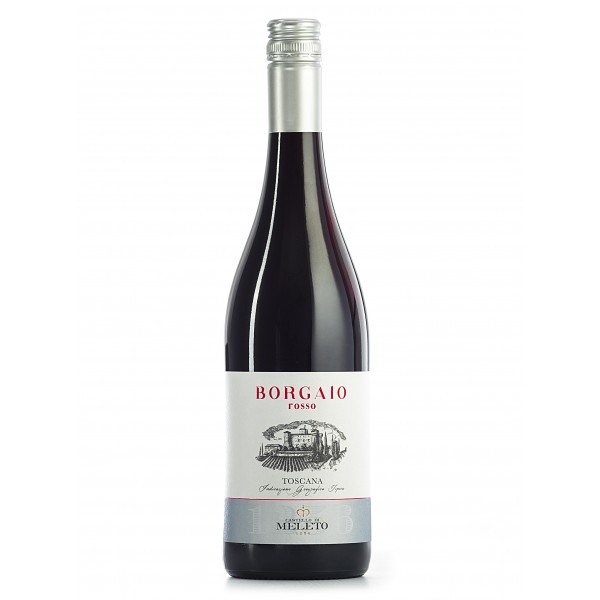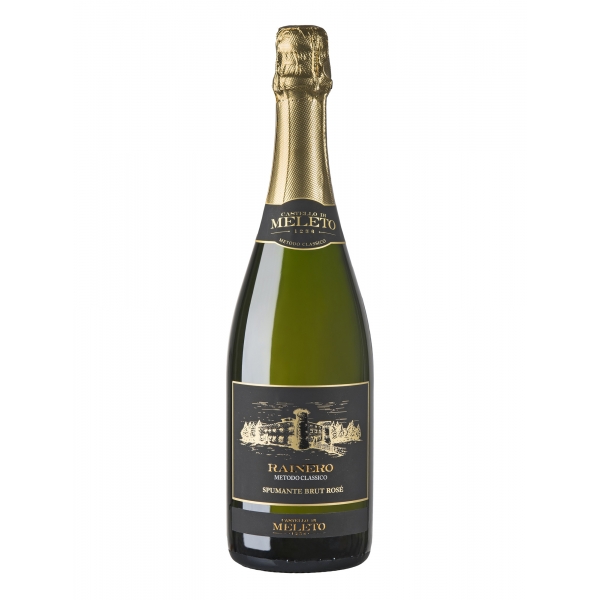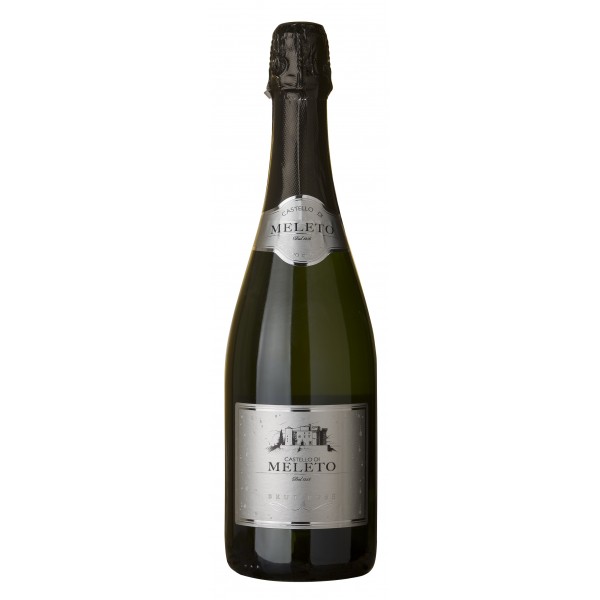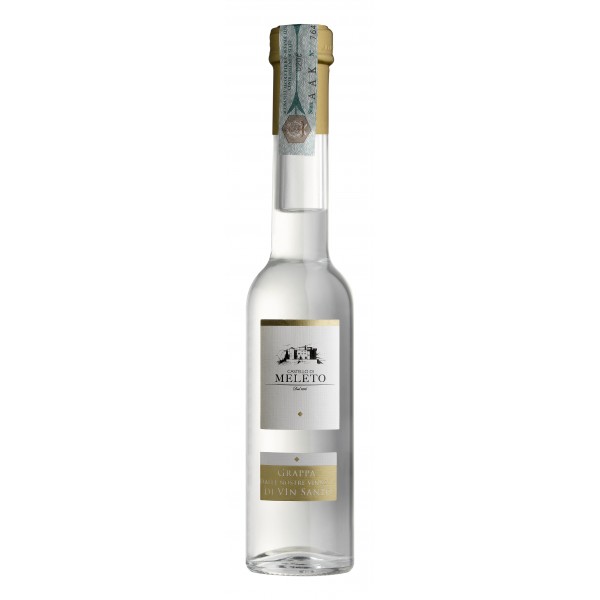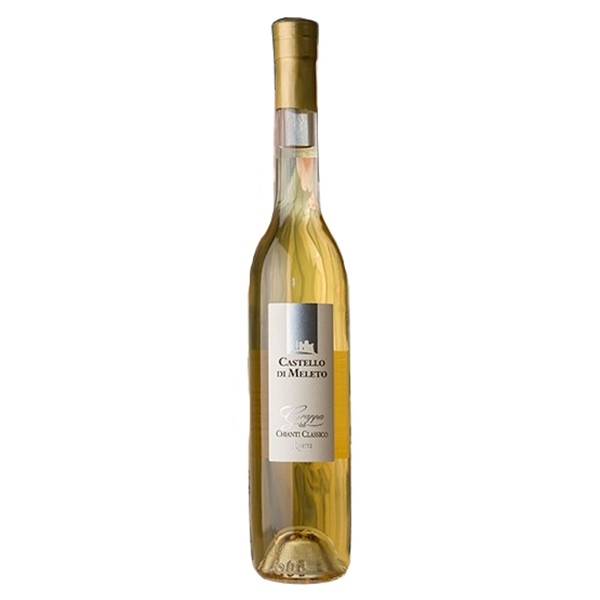No products
Categories
- Fashion Accessories
- Clothing
- Beauty & Lifestyle
-
Hi-Tech & Lifestyle
- Gaming
-
Case
- iPhone 11 Pro
- iPhone 11 Pro Max
- iPhone 11
- iPhone X / XS
- iPhone XS Max
- Samsung S10 / S10+ / S10e
- Huawei P30 / P30 Pro / P30 Lite
- Huawei P20 / P20 Pro / P20 Lite
- iPhone XR
- Samsung S9
- Samsung S9+
- iPhone 8 / 7
- iPhone 8 Plus / 7 Plus
- Samsung S8
- Samsung S8+
- Samsung S7
- Samsung S7 Edge
- iPhone 6 / 6 s
- iPhone 6 Plus / 6 s Plus
- iPhone 5 / SE
- Skin
- Audio
- Smart Home
- Drones & Hoverboard
- Photo & Video
- Desk Supplies
- Accessories
- Games
- Beverages
- Food
- Home
- Jewelry
- Luxury
- Travel
- Art
- Footwear
- Vintage Fashion
- Restaurants
- Sport
- Animals
- Gift Ideas
- Kidswear
Extra
Castello di Meleto
In Gaiole in Chianti since 1256

A Farm in the Nature

A View From The Sky
The Vineyards

The land of Castello di Meleto extend around the medieval town for about 2,470 acres: of these 300 are reserved for growing grapes. Sangiovese is the main varietal used in the production of the Chianti Classico DOCG. Other varietals planted in the '80s include Merlot and Cabernet, but since the late 90s there has been a process of replanting aimed at enhancing the traditional heritage of grapes in Tuscany, also introducing some white varieties such as Vermentino.
The soil is primarily composed of galestro, a chalky marlstone, alberese, a weathered sandstone and calcareous marl, from this arid and rocky soil the vines bring forth their best fruits, rich in natural aromas and fragrances.
.jpg)
Castello di Meleto produces primarily traditional Chianti Classico DOCG, a modern, intriguing Spumante Brut Rosè, two typical and distinct types of Grappa, an organic Extra Virgin Olive Oil as well as breeding the Cinta Senese breed of pig.
The Meleto vineyards produce about 6,000 kilograms of grapes per hectare, which is harvested partly by hand and partly by machine.
Great wines from great grapes. The Meleto Chianti Classico is a modern wine which still retains the traditional fine and elegant flavor. Our legendary Vigna Casi Riserva and the Supertuscans have a more intense structure, yet pleasantly full-bodied and persistent.
Wines
.jpg)
From the clusters ripened under the Tuscan sun come grapes of exceptional purity. The 300 acres of vineyards located within the estate of Castello di Meleto have all the necessary requisites for producing great wines: good soil, perfect microclimate and the expertise of our farm managers.
Extra Virgin Olive Oil
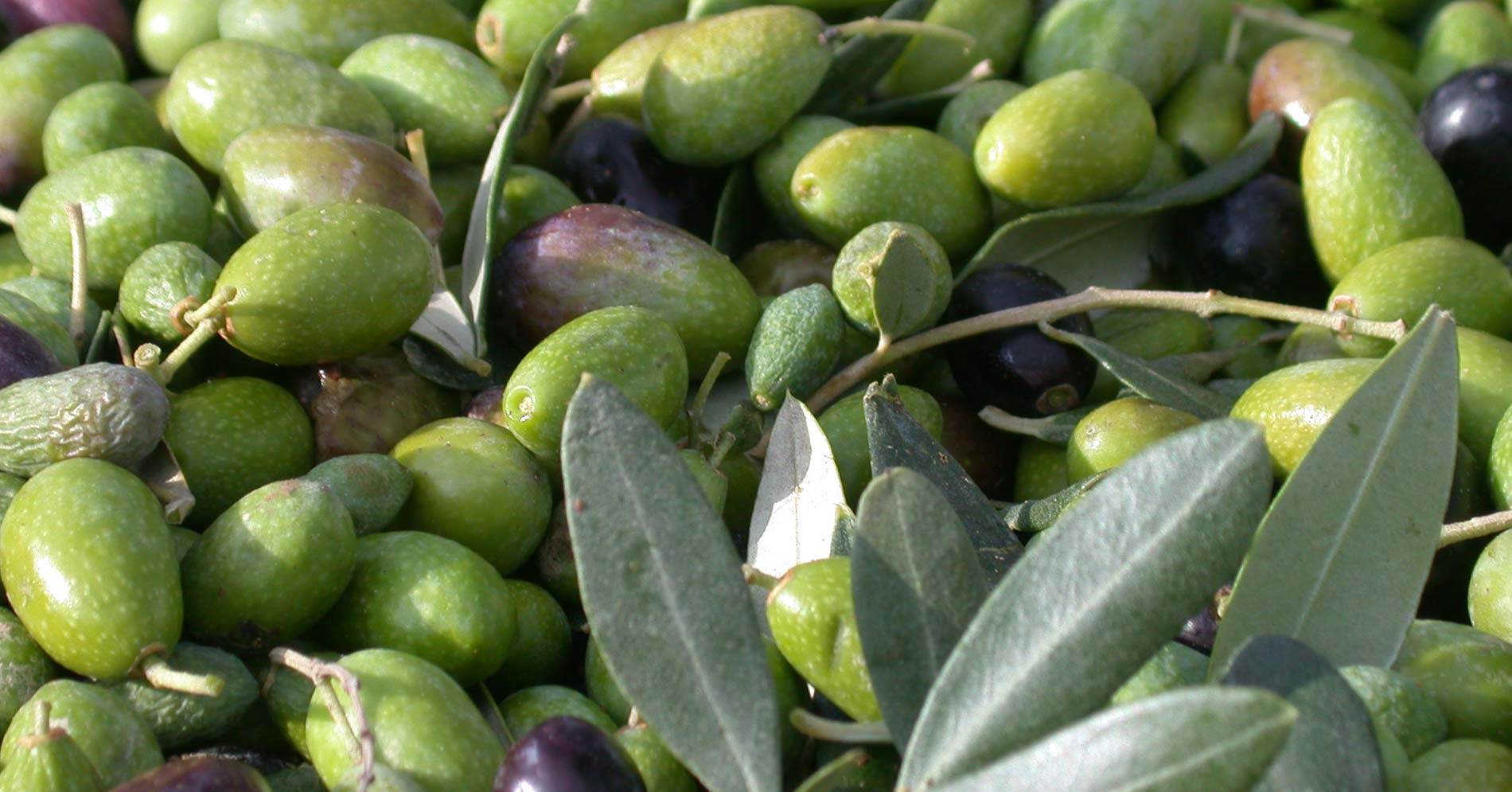
The land surrounding Meleto Castle, located at an altitude ranging from 360 to 530 meters above sea level, is home to an olive grove with about 1,600 centuries-old olive trees which are used to produce an organic Extra Virgin Olive Oil with extraordinary sensory and nutritional qualities.
The olive trees are cultivated using the polyconic vase growing system, while the main cultivars are traditionally Tuscan ones: Frantoio, Moraiolo, Leccino and Pendolino. Usually the olives are hand-harvested in early November.
The olives are pressed on the day they are harvested and produce olive oil which is particularly fruity, appropriately acidic and slightly spicy.
Cinta Senese Breeding Farm

Cinta Senese is an Italian breed of pigs named so because of the white stripe the animal has on its slate black coat and for the original breeding area (Montagnola Senese with its immense forests of holm oaks, Turkey oaks and oaks provide an underbrush rich in acorns and chestnuts which are at the heart of this animal’s diet). The Consortium for the Preservation of the Cinta Senese breed, established in 2000, promoted the “Suino Cinto Toscano” to DOP. At the Castle we began breeding about forty pigs in the Molin Lungo area, in a forest of about 4 hectares where the animals can freely graze in the wild.
Their meat is used to manufacture fresh products and traditional Tuscan cured meats (prosciutto, spalla, gota, lardo, pancetta or rigatino, capocollo, salame, salsicce, finocchiona): the trademark “Suino Cinto Toscano DOP” may be used only for meat originating from animals of at least 12 months of age.
Castello di Meleto - A Charming and Enchanted Place
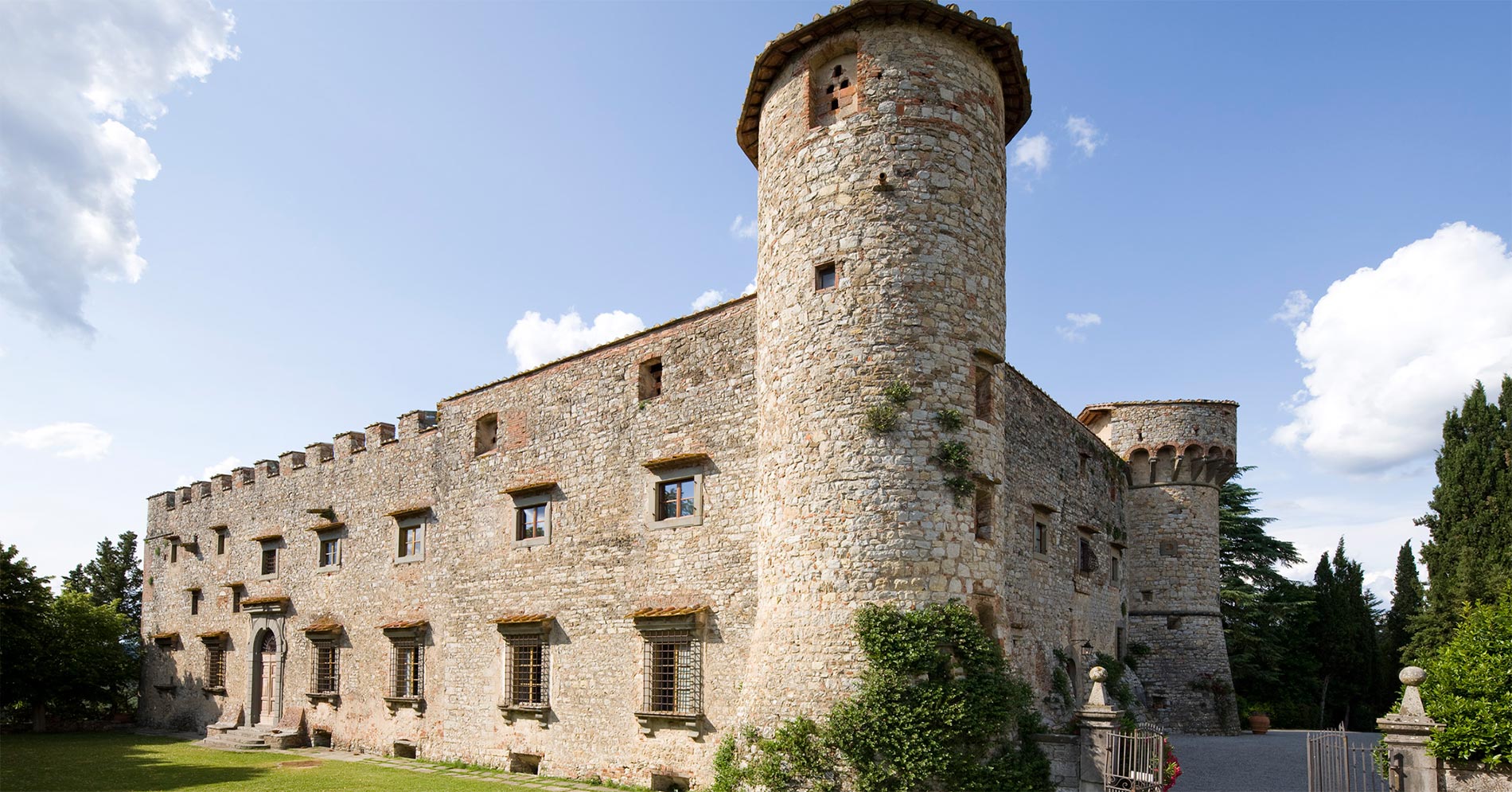
Historical Background

The first accounts relating to Meleto date back to the eleventh century, at which time it was a property of the Benedictine monks. Subsequently it became the property of a certain “Guardellotto”, a member of a local feudal family, whom Frederick I Barbarossa dispossessed of his properties, giving them to the Ricasoli-Firidolfi family.
The family branch of Firidolfi da Meleto originated here. The name “Meleto in Chianti” was first included in the “Libro degli Estimi” (Book of surveying) of the Florentine Guelphs as property of Firidolfi family in 1256.
Its location, set between the Republics of Siena and Florence, ensured that the Castle was the background of many wars between the Guelphs and the Ghibellines, one of which was the second Aragonese invasion of Chianti in 1478 when it was occupied by enemy troops, and during the Medici War, in 1529, when it was besieged by the Senesi militia.
Historical Archive

Meleto Castle is like a chest full of treasures, secret passageways, archives and surprises await behind every corner in an archive walled within the tower.
We discovered a series of important documents which attest to the castle’s history: the entrances, the exits, the expenses, the products cultivated on the farm.
For each single croft, the names of the farmhands, the names of the owners, the vines: in a word records worthy of a modern computer.
Meleto Castle Today
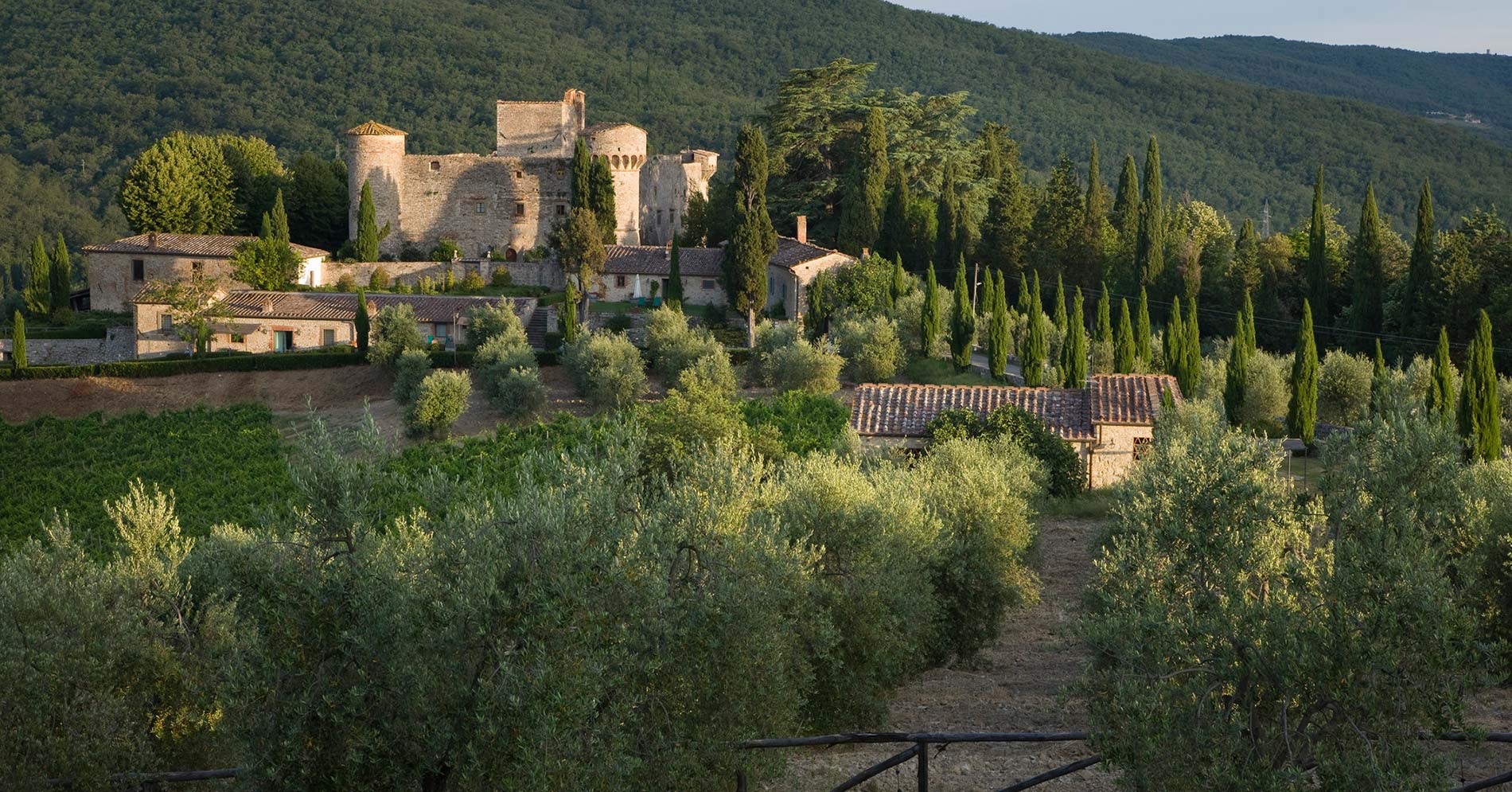
Viticola Toscana is a joint-stock company established in 1968 by a Milan editor, Commendatore Gianni Mazzocchi, President of Editoriale Domus and, therefore editor of two important magazines: Quattrosoldi and Quattroruote.
He published a public flotation on Quattrosoldi, offering it as constitution for a joint-stock company to purchase a farm in Maremma.
The sudden success (over 1,500 investors) is such that a part of the Ricasoli estate on sale in Chianti is also purchased: the Meleto Farm, measuring 1,400 acres, many farmsteads, Meleto Castle, the Parish and the annexed convent of Santa Maria a Spaltenna.
An important agricultural transformation takes place between 1968 and 1972, during which the Viticola Toscana implants 180 hectares of vineyards, then a large wine making cellar is built and production of the Chianti Classico DOCG wine begins.
Today, fifty years later, Viticola Toscana has brought about a great change in this area of Chianti, once considered “disadvantaged” because it is located far from the areas which tourist generally visit: the tenant farming which caused people to abandon the area has been replaced with budget management, the farmsteads have been renovated and those located near the Castle have been turned into agritourisms.
Historical Photos
.jpg)
A collection of the most beautiful historic photos of the Castle of Meleto.
.jpg)
.jpg)
.jpg)
 y.jpg)
.jpg)
.jpg)
.jpg)
Guided Tours
.jpg)
There are guided tours of the Meleto Castle, lasting approximately 30 minutes, during which you can admire the lovely frescoed rooms of the Piano Nobile (main floor), the small Eighteenth-century theatre and the old subterranean wine cellar.
.jpg)
Gli orari delle visite - Tutti i giorni: 11.00 – 15.00
.jpg)
.jpg)
We generally request that you book a tour, in order to ensure beforehand whether the rooms are accessible for the guided tour.
.jpg)
Activities at the Castle
.jpg)
.jpg)
The company’s “multifunctionality” translates into a wide array of activities available to customers:
- Tasting of our own wines;
- Comparative olive oil tasting;
- Light lunches;
- Guided tours of the castle;
- Tours of the Cinta Senese breeding farm;
- Cooking classes
- Themed events
- Weddings
- Activities related to painting and art
.jpg)
.jpg)
.jpg)
.jpg)
The Surrounding Area

Chianti is without a doubt one of the most renowned wine-producing areas. And that’s not all. When thinking of the territory we cannot help but recall the cypress trees, the churches, the castles which dot the region.
During Medieval times Gaiole in Chianti was an important merchant town set along the road to Valdarno. The many castles and parishes in the surrounding area are a testament to the flourishing and prosperous farms and businesses.
Castellina in Chianti was turned into a fortress; the imposing stronghold set in the main town square is all that remains of it today. From its crenellated fourteenth-century tower you can admire the lovely Chianti landscape.
Castelnuovo Berardegna is often viewed as an offshoot of Siena, since tourists do not consider it part of the province of Siena. The city and the surrounding countryside are charming areas, full of character and history, rich in architecture, gardens and historical locations.
Radda in Chianti is set in the rolling hills surrounding the vale of the rivers Pesa and Arbia. Mentioned for the first time in a 11th century document, the town, the court and its castle were property of the Florentine Abbey.
All that remains of the castle today are some sections of towers and segments of the wall; the framework of the old medieval town has been preserved. It surrounds the old church of Saint Nicholas and the fifteenth-century Palazzo del Podesta, currently the headquarters of City Hall.
Radda is an important wine producing town, as well as the hub for trade in Chianti, the junction for the network of roads which link all the small towns and isolated farms
San Gimignano rises with the outline of its towers on a hill (334 meters) overlooking Val d’Elsa. The site of a small Etruscan village during the Hellenistic era (III-II century b.C.) its story begins around the tenth century, when it was named after the Bishop of Modena: San Gimignano, who saved the town from barbarian hordes. It flourished during Medieval times thanks to the Via Francigena which crossed the town.
The existing 15 medieval towers (a distant memory of the 72 towers the city had at the height of its glory) proclaim from afar the splendor of the Tuscan city.
Events
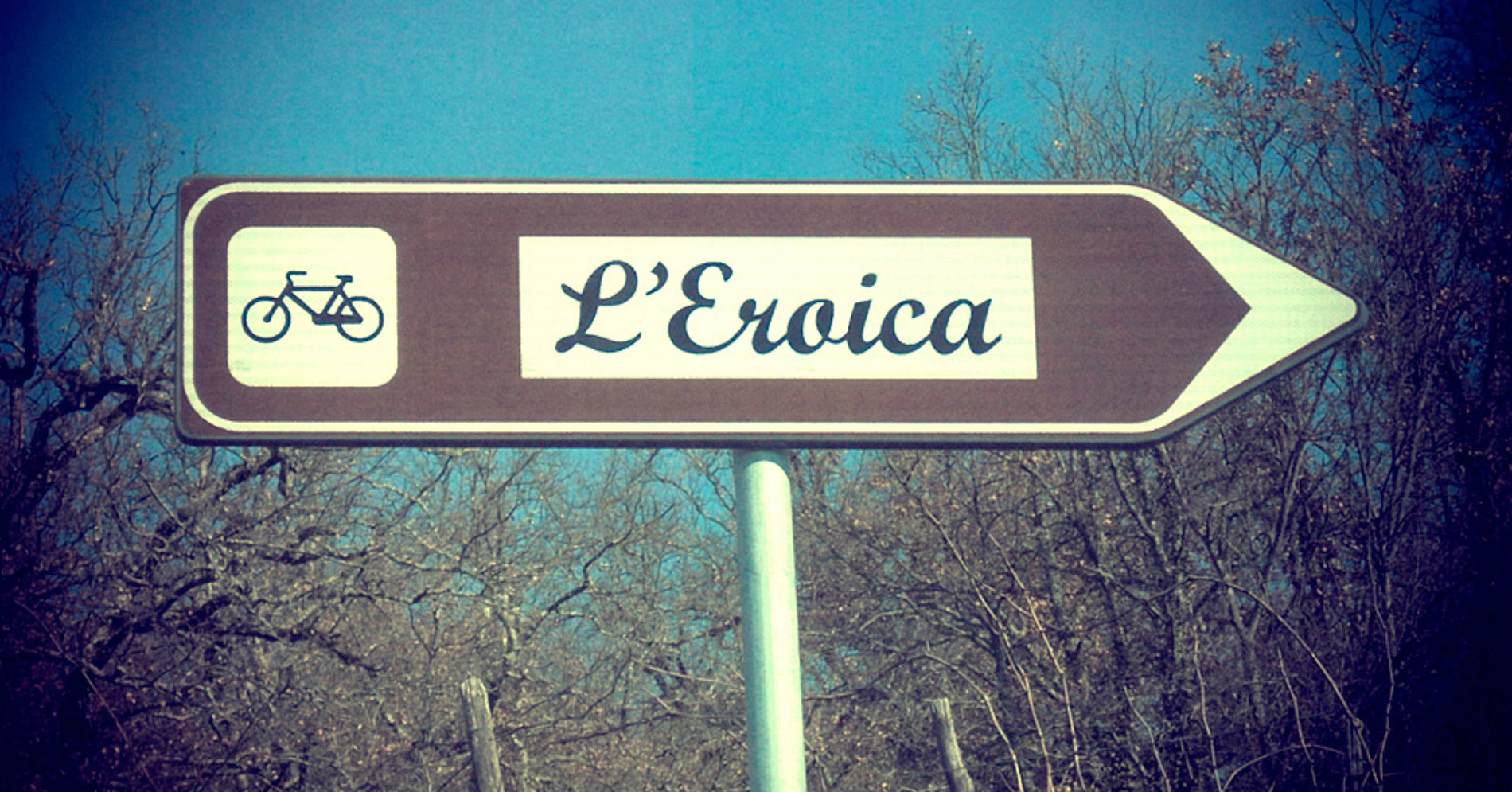
Everyone has heard of the Palio di Siena, but few know of the myriad events which take place in the surrounding area throughout the whole year. A cycling race is the main event in Gaiole in Chianti named: L'Eroica. It’s a historical pageant commemorating olden-day cyclingwhich generally takes place on the first Sunday of October. The first Sunday of November a running race is held.
Moreover, there are many town festivals which, in keeping with the Christian calendar, celebrate the local patron saint. A score of events celebrate the passing seasons, animals, traditional products and historical pageants. The most noteworthy are the “Sagra del Cocomero” (Watermelon Festival) in Castellina in Chianti, “Calici di Stelle” which takes place in many town in the region, the “Sagra della Cinta Senese” (Festival of the Cinta Senese breed) in San Casciano dei Bagni and the “Festa del Barbarossa” in San Quirico d’Orcia.
Wine Shop - Our Services
.jpg)
.jpg)
Within the original, vast old cellar of the castle at the end of a stone path hollowed through stone and past an original “secret passageway” is our wine shop: a large tasting room where one may taste Meleto’s wines as well as cured meats from our free-range breeding farm of “Suino Cinto Senese Dop”, organic olive oil, honey and other Tuscan specialties.
.jpg)
.jpg)
An inviting, private tasting room is reserved for the true “wine connoisseurs” who want to experience the thrill of becoming acquainted with and savoring a selection of high-quality products.
.jpg)
.jpg)
.jpg)
.jpg)
.jpg)
.jpg)
Products Castello di Meleto
Castello di Meleto
In Gaiole in Chianti since 1256

A Farm in the Nature

A View From The Sky
The Vineyards

The land of Castello di Meleto extend around the medieval town for about 2,470 acres: of these 300 are reserved for growing grapes. Sangiovese is the main varietal used in the production of the Chianti Classico DOCG. Other varietals planted in the '80s include Merlot and Cabernet, but since the late 90s there has been a process of replanting aimed at enhancing the traditional heritage of grapes in Tuscany, also introducing some white varieties such as Vermentino.
The soil is primarily composed of galestro, a chalky marlstone, alberese, a weathered sandstone and calcareous marl, from this arid and rocky soil the vines bring forth their best fruits, rich in natural aromas and fragrances.
.jpg)
Castello di Meleto produces primarily traditional Chianti Classico DOCG, a modern, intriguing Spumante Brut Rosè, two typical and distinct types of Grappa, an organic Extra Virgin Olive Oil as well as breeding the Cinta Senese breed of pig.
The Meleto vineyards produce about 6,000 kilograms of grapes per hectare, which is harvested partly by hand and partly by machine.
Great wines from great grapes. The Meleto Chianti Classico is a modern wine which still retains the traditional fine and elegant flavor. Our legendary Vigna Casi Riserva and the Supertuscans have a more intense structure, yet pleasantly full-bodied and persistent.
Wines
.jpg)
From the clusters ripened under the Tuscan sun come grapes of exceptional purity. The 300 acres of vineyards located within the estate of Castello di Meleto have all the necessary requisites for producing great wines: good soil, perfect microclimate and the expertise of our farm managers.
Extra Virgin Olive Oil

The land surrounding Meleto Castle, located at an altitude ranging from 360 to 530 meters above sea level, is home to an olive grove with about 1,600 centuries-old olive trees which are used to produce an organic Extra Virgin Olive Oil with extraordinary sensory and nutritional qualities.
The olive trees are cultivated using the polyconic vase growing system, while the main cultivars are traditionally Tuscan ones: Frantoio, Moraiolo, Leccino and Pendolino. Usually the olives are hand-harvested in early November.
The olives are pressed on the day they are harvested and produce olive oil which is particularly fruity, appropriately acidic and slightly spicy.
Cinta Senese Breeding Farm

Cinta Senese is an Italian breed of pigs named so because of the white stripe the animal has on its slate black coat and for the original breeding area (Montagnola Senese with its immense forests of holm oaks, Turkey oaks and oaks provide an underbrush rich in acorns and chestnuts which are at the heart of this animal’s diet). The Consortium for the Preservation of the Cinta Senese breed, established in 2000, promoted the “Suino Cinto Toscano” to DOP. At the Castle we began breeding about forty pigs in the Molin Lungo area, in a forest of about 4 hectares where the animals can freely graze in the wild.
Their meat is used to manufacture fresh products and traditional Tuscan cured meats (prosciutto, spalla, gota, lardo, pancetta or rigatino, capocollo, salame, salsicce, finocchiona): the trademark “Suino Cinto Toscano DOP” may be used only for meat originating from animals of at least 12 months of age.
Castello di Meleto - A Charming and Enchanted Place

Historical Background

The first accounts relating to Meleto date back to the eleventh century, at which time it was a property of the Benedictine monks. Subsequently it became the property of a certain “Guardellotto”, a member of a local feudal family, whom Frederick I Barbarossa dispossessed of his properties, giving them to the Ricasoli-Firidolfi family.
The family branch of Firidolfi da Meleto originated here. The name “Meleto in Chianti” was first included in the “Libro degli Estimi” (Book of surveying) of the Florentine Guelphs as property of Firidolfi family in 1256.
Its location, set between the Republics of Siena and Florence, ensured that the Castle was the background of many wars between the Guelphs and the Ghibellines, one of which was the second Aragonese invasion of Chianti in 1478 when it was occupied by enemy troops, and during the Medici War, in 1529, when it was besieged by the Senesi militia.
Historical Archive

Meleto Castle is like a chest full of treasures, secret passageways, archives and surprises await behind every corner in an archive walled within the tower.
We discovered a series of important documents which attest to the castle’s history: the entrances, the exits, the expenses, the products cultivated on the farm.
For each single croft, the names of the farmhands, the names of the owners, the vines: in a word records worthy of a modern computer.
Meleto Castle Today

Viticola Toscana is a joint-stock company established in 1968 by a Milan editor, Commendatore Gianni Mazzocchi, President of Editoriale Domus and, therefore editor of two important magazines: Quattrosoldi and Quattroruote.
He published a public flotation on Quattrosoldi, offering it as constitution for a joint-stock company to purchase a farm in Maremma.
The sudden success (over 1,500 investors) is such that a part of the Ricasoli estate on sale in Chianti is also purchased: the Meleto Farm, measuring 1,400 acres, many farmsteads, Meleto Castle, the Parish and the annexed convent of Santa Maria a Spaltenna.
An important agricultural transformation takes place between 1968 and 1972, during which the Viticola Toscana implants 180 hectares of vineyards, then a large wine making cellar is built and production of the Chianti Classico DOCG wine begins.
Today, fifty years later, Viticola Toscana has brought about a great change in this area of Chianti, once considered “disadvantaged” because it is located far from the areas which tourist generally visit: the tenant farming which caused people to abandon the area has been replaced with budget management, the farmsteads have been renovated and those located near the Castle have been turned into agritourisms.
Historical Photos
.jpg)
A collection of the most beautiful historic photos of the Castle of Meleto.
.jpg)
.jpg)
.jpg)
 y.jpg)
.jpg)
.jpg)
.jpg)
Guided Tours
.jpg)
There are guided tours of the Meleto Castle, lasting approximately 30 minutes, during which you can admire the lovely frescoed rooms of the Piano Nobile (main floor), the small Eighteenth-century theatre and the old subterranean wine cellar.
.jpg)
Gli orari delle visite - Tutti i giorni: 11.00 – 15.00
.jpg)
.jpg)
We generally request that you book a tour, in order to ensure beforehand whether the rooms are accessible for the guided tour.
.jpg)
Activities at the Castle
.jpg)
.jpg)
The company’s “multifunctionality” translates into a wide array of activities available to customers:
- Tasting of our own wines;
- Comparative olive oil tasting;
- Light lunches;
- Guided tours of the castle;
- Tours of the Cinta Senese breeding farm;
- Cooking classes
- Themed events
- Weddings
- Activities related to painting and art
.jpg)
.jpg)
.jpg)
.jpg)
The Surrounding Area

Chianti is without a doubt one of the most renowned wine-producing areas. And that’s not all. When thinking of the territory we cannot help but recall the cypress trees, the churches, the castles which dot the region.
During Medieval times Gaiole in Chianti was an important merchant town set along the road to Valdarno. The many castles and parishes in the surrounding area are a testament to the flourishing and prosperous farms and businesses.
Castellina in Chianti was turned into a fortress; the imposing stronghold set in the main town square is all that remains of it today. From its crenellated fourteenth-century tower you can admire the lovely Chianti landscape.
Castelnuovo Berardegna is often viewed as an offshoot of Siena, since tourists do not consider it part of the province of Siena. The city and the surrounding countryside are charming areas, full of character and history, rich in architecture, gardens and historical locations.
Radda in Chianti is set in the rolling hills surrounding the vale of the rivers Pesa and Arbia. Mentioned for the first time in a 11th century document, the town, the court and its castle were property of the Florentine Abbey.
All that remains of the castle today are some sections of towers and segments of the wall; the framework of the old medieval town has been preserved. It surrounds the old church of Saint Nicholas and the fifteenth-century Palazzo del Podesta, currently the headquarters of City Hall.
Radda is an important wine producing town, as well as the hub for trade in Chianti, the junction for the network of roads which link all the small towns and isolated farms
San Gimignano rises with the outline of its towers on a hill (334 meters) overlooking Val d’Elsa. The site of a small Etruscan village during the Hellenistic era (III-II century b.C.) its story begins around the tenth century, when it was named after the Bishop of Modena: San Gimignano, who saved the town from barbarian hordes. It flourished during Medieval times thanks to the Via Francigena which crossed the town.
The existing 15 medieval towers (a distant memory of the 72 towers the city had at the height of its glory) proclaim from afar the splendor of the Tuscan city.
Events

Everyone has heard of the Palio di Siena, but few know of the myriad events which take place in the surrounding area throughout the whole year. A cycling race is the main event in Gaiole in Chianti named: L'Eroica. It’s a historical pageant commemorating olden-day cyclingwhich generally takes place on the first Sunday of October. The first Sunday of November a running race is held.
Moreover, there are many town festivals which, in keeping with the Christian calendar, celebrate the local patron saint. A score of events celebrate the passing seasons, animals, traditional products and historical pageants. The most noteworthy are the “Sagra del Cocomero” (Watermelon Festival) in Castellina in Chianti, “Calici di Stelle” which takes place in many town in the region, the “Sagra della Cinta Senese” (Festival of the Cinta Senese breed) in San Casciano dei Bagni and the “Festa del Barbarossa” in San Quirico d’Orcia.
Wine Shop - Our Services
.jpg)
.jpg)
Within the original, vast old cellar of the castle at the end of a stone path hollowed through stone and past an original “secret passageway” is our wine shop: a large tasting room where one may taste Meleto’s wines as well as cured meats from our free-range breeding farm of “Suino Cinto Senese Dop”, organic olive oil, honey and other Tuscan specialties.
.jpg)
.jpg)
An inviting, private tasting room is reserved for the true “wine connoisseurs” who want to experience the thrill of becoming acquainted with and savoring a selection of high-quality products.
.jpg)
.jpg)
.jpg)
.jpg)
.jpg)
.jpg)
Products Castello di Meleto
-
Castello di Meleto - Good Morning - History - Art - Wine - 3 Days 2 Nights
The land of Castello di Meleto extend around the medieval town for about 2,470 acres: of these 300 are reserved for growing grapes. Sangiovese is the main varietal used in the production of the Chianti Classico DOCG. Other varietals planted in the '80s include Merlot and Cabernet, but since the late 90s there has been a process of replanting aimed at...
316,00 € -
Castello di Meleto - Good Morning - History - Art - Wine - 4 Days 3 Nights
The land of Castello di Meleto extend around the medieval town for about 2,470 acres: of these 300 are reserved for growing grapes. Sangiovese is the main varietal used in the production of the Chianti Classico DOCG. Other varietals planted in the '80s include Merlot and Cabernet, but since the late 90s there has been a process of replanting aimed at...
430,00 € -
Castello di Meleto - Rainero Red Tuscany I.G.T. - Double Magnum - 3 l
Impenetrable ruby red with violet hues and intense perfumes of berries and spices with tobacco and coffee notes. Great roundness and excellent structure with significant tannins well sustained by a good alcohol concentration, long and pleasant finish.
145,00 €Sold Out - Not Available -
Castello di Meleto - Rainero Red Tuscany I.G.T. - Magnum - 1,5 l
Impenetrable ruby red with violet hues and intense perfumes of berries and spices with tobacco and coffee notes. Great roundness and excellent structure with significant tannins well sustained by a good alcohol concentration, long and pleasant finish.
69,00 €Sold Out - Not Available -
Castello di Meleto - Rainero Red Tuscany I.G.T.
Impenetrable ruby red with violet hues and intense perfumes of berries and spices with tobacco and coffee notes. Great roundness and excellent structure with significant tannins well sustained by a good alcohol concentration, long and pleasant finish.
35,00 €Sold Out - Not Available -
Castello di Meleto - Fiore Red Tuscany I.G.T. - Magnum - 1,5 l
Deep ruby red with mineral and small fruits notes followed by mature fruit and light hints of toast with a slightly spicy finish. Full bodied, warm and round, extremely elegant and well balanced. It has non-aggressive tannins and good acidity, an excellent intense finish.
50,00 €Sold Out - Not Available -
Castello di Meleto - Fiore Red Tuscany I.G.T. - Double Magnum - 3 l
Deep ruby red with mineral and small fruits notes followed by mature fruit and light hints of toast with a slightly spicy finish. Full bodied, warm and round, extremely elegant and well balanced. It has non-aggressive tannins and good acidity, an excellent intense finish.
115,00 €Sold Out - Not Available -
Castello di Meleto - Borgaio Red Tuscany I.G.T.
Deep ruby red, with notes of red berry fruits and hints of violet. Pleasantly fresh and round with soft tannins. Good persistence on the finish.
9,90 €Sold Out - Not Available -
Castello di Meleto - Rainero - Brut Rosé Classic Method Sparkling Wine -...
Castello di Meleto has created a unique Rainero label. The Sangiovese you don't expect. Fresh, elegant and structured. Soft pink, cipollino. Very complex and characterized; with typical notes of bread crust. Fresh and soft taste with thick and persistent perlage.
18,00 €Sold Out - Not Available -
Castello di Meleto - Spumante Brut Rosè - Metodo Classico
Pale, soft pink. Complex and characterized by a distinct aroma of bread crust. Fresh and smooth with a dense and persistent perlage.
18,00 €Sold Out - Not Available -
Castello di Meleto - Vinsanto of Chianti Classico Grappa - 500 ml
Alone at the end of the meal as a digestive or as an accompaniment to chocolate cakes.
28,00 €Sold Out - Not Available -
Castello di Meleto - Grappa of Chianti Classico Riserva - Liqueurs and...
Castello di Meleto has created an exclusive grappa of Chianti Classico Riserva.
28,00 €Sold Out - Not Available -
Castello di Meleto - Brandy di Sangiovese - 500 ml
Not only do we produce wines. From our grapes we obtain grappa, brandy, and signature spirits. You will find them for sale only here. Looking for a good digestive to round off your meal? You may taste our Grappa del Chianti Classico Riserva, made from the pomace of Castello di Meleto, it is smooth, fragrant and pleasant.
29,00 €Sold Out - Not Available




